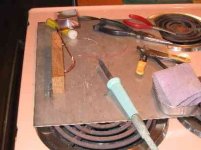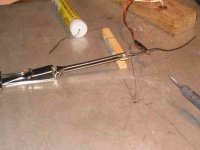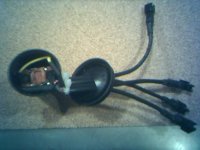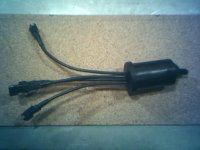Zoot Katz
100 kW
Just as I was finishing the last solder joint it dawned on me that I'd not be able to remove the controller or VeeRack on my Xtracycle unless I cut or de soldered the wires powering my lights. . . the ones I'd just installed!
No problem, I'll buy some connectors and pop those on in an hour or so. Delusional is the word that best describes that notion.
The connectors in question are the assorted ones sold by ebikes.ca and pictured below.
Got 'em home, snipped all the wires and proceeded to get more flummoxed and frustrated as the hour turned into three without achieving credible results.
Those things are tiny. Too tiny for the crummy crimper I own. The wire looks to be smaller than AWG 24. The only way I could get things to sorta work is by tinning the wires and heating the pin so the wire would sorta stick and permit mangling the prongs on the pin to hold it long enough to make a good solder joint. My lack of technique produced results that are not acceptable.
So the questions are, what are those connectors called? And what sort of crimper do they require? They're the same type connector as those used on the Cycle Analyst.
Any tips, even the most basic stuff everybody should know, will be most welcome.

No problem, I'll buy some connectors and pop those on in an hour or so. Delusional is the word that best describes that notion.
The connectors in question are the assorted ones sold by ebikes.ca and pictured below.
Got 'em home, snipped all the wires and proceeded to get more flummoxed and frustrated as the hour turned into three without achieving credible results.
Those things are tiny. Too tiny for the crummy crimper I own. The wire looks to be smaller than AWG 24. The only way I could get things to sorta work is by tinning the wires and heating the pin so the wire would sorta stick and permit mangling the prongs on the pin to hold it long enough to make a good solder joint. My lack of technique produced results that are not acceptable.
So the questions are, what are those connectors called? And what sort of crimper do they require? They're the same type connector as those used on the Cycle Analyst.
Any tips, even the most basic stuff everybody should know, will be most welcome.








